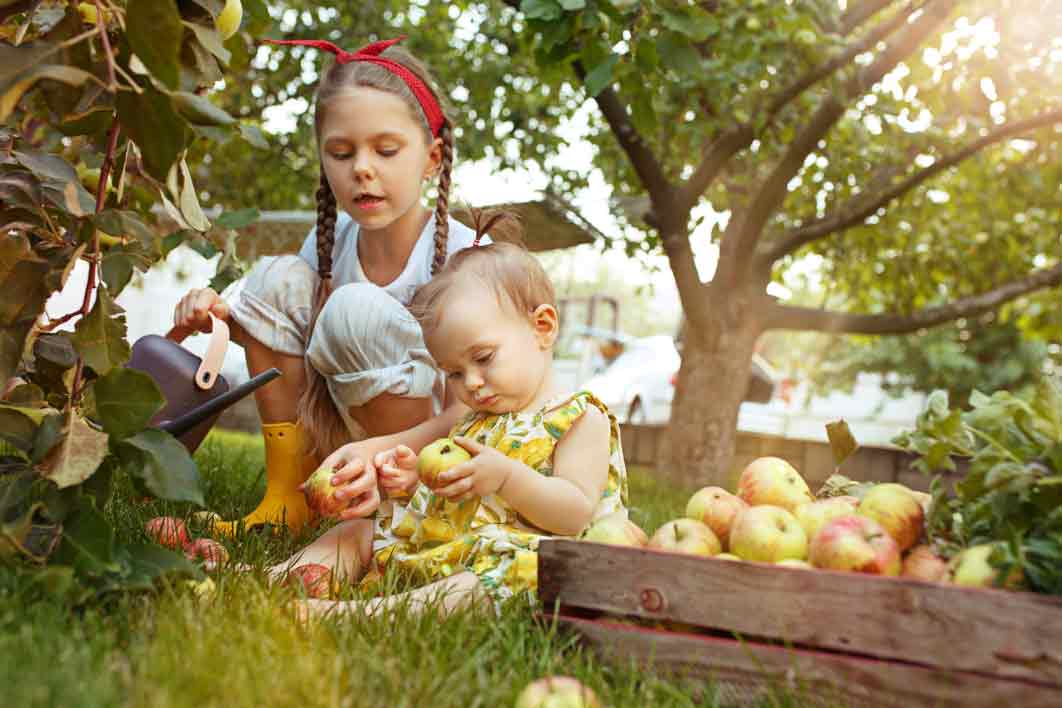Lack of Affordable Child Care is Hurting youthful ranch Families ’ Capability to Grow Their Businesses
Shoshanah Inwood and Florence Becot, The discussion
Child care has too long been left out of ranch policy debates, but our exploration has constantly set up that child care is an issue that affects all of husbandry anyhow of ranch size, product system or position.
Kerissa and Charlie Payne are beginning growers living their dream of raising two daughters on a ranch in Central Ohio. By conventional measures, their beast ranch, Covey Rise, is a success. Yet, below the face, the challenge of chancing quality affordable child care has kept their business from growing and reaching its full eventuality.
“ It feels like we ’re always resolve between keeping the kiddies safe on the ranch, being a good parent, and the requirements of the ranch, ” Kerissa Payne said.
The United States has a child care extremity, yet the issue remains largely unnoticeable in the ranch sector. For too long, the nation has ignored the fact that ranch parents are working parents who must juggle child care while working what can be one of the most dangerous and stressful jobs in America.
But as Bob Dylan might say, “ The times they’rea-changin ’. ”
For the first time in history, the two largest ranch associations, the American Farm Bureau and the National Farmers Union, have included child care in their policy precedences for the 2023 civil ranch bill, a massive spending bill that passes every five times. As pastoral experimenters, our exchanges with policymakers suggest that there may be bipartisan support to help increase access to affordable quality pastoral child care as lawgivers hear from families.
Over the once 10 times, we’ve canvassed and surveyed thousands of growers across the country to understand how child care affects ranch business profitable viability, ranch safety, ranch families ’ quality of life and the future of the nation’s food force. What we set up debunks the three most common myths that have kept child care in the murk of ranch policy debates and points to results that can support ranch parents.
Myth# 1 Child care is a not a problem in the ranch sector
Despite hail from innumerous parents about their challenges with child care, the issue has been largely unnoticeable among ranch business counsels, ranch associations, and civil and state agrarian agencies. When we were canvassing counsels and decision– makers about this content beforehand in the COVID- 19 epidemic, common first responses we heard were “ child care isn’t an issue for growers, ” “ we have noway allowed to ask about it ” and “ does it affect the ranch business? ”
Nationally, three- diggings( 77 percent) of ranch families with children under 18 report difficulties securing child care because of lack of affordability, vacuity or quality. nearly partial( 48 percent) report that having access to affordable child care is important for maintaining and growing their ranch business.
ADS
Our exploration has constantly set up child care is an issue that affects all of husbandry anyhow of ranch size, product system or position.
Access to child care is especially acute in pastoral areas, where indeed before COVID- 19, 3 in 5 pastoral communities were distributed as child care comeuppance. The high cost of child care left the Paynes in a position familiar to numerous Americans – they make too important to qualify for child care support, but they do n’t make enough to go the type of quality child care they want.
The Paynes ’ experience reflects what we constantly hear from growers Child care affects the line of the ranch business and the capability of a ranch family to stay on the land.
Myth# 2 growers do n’t want or need help with child care because they’ve family help
maybe one of the biggest myths we’ve heard is that ranch parents want to do it all on their own, and when they need help, they’ve family members who can watch the children.
This might work if cousins are hard, but nearly half of growers we surveyed said their own parents were too busy to help with child care, had failed or were in declining health.
frequently, ranch parents have had to move down from family and musketeers to find affordable land. These parents constantly said the lack of community made it harder to take care of their children.
growers have constantly said that it’s a myth that they do n’t want help taking care of children. The problem is that they can not find or go help.
While awful places to grow up, granges can be dangerous, with large outfit, electric fencing, large creatures, ponds and other implicit hazards. Every day, 33 children are seriously injured in agrarian–affiliated incidents, and every three days a child dies on a ranch.ranch parents we spoke with reported stories of children who failed after falling out of a tractor, drowned when they fell into a pond, or were mutilated by a cow. nearly all ranch parents 97 percent — have bothered that their children could get hurt on the ranch.In our exploration, parents talked about constantly importing the pitfalls and benefits of having children on the ranch. One planter had hoped his youthful son would “ be my little apprentice and do everything I did. ” still, the reality was different. He admitted he “ did n’t suppose about a baby not being suitable to be out in the sun all day, ” and he was floundering to balance care work and ranch work. The government has spent millions of bones on ranch stress programs, yet child care’s part in creating and aggravating ranch stress is infrequently talked about.The Paynes asked a question we heard from numerous other parents “ Why is tilling the only occupation where you’re anticipated to take your kiddies to work ”ranch safety programs have traditionally concentrated on education. still, our exploration shows that ranch parents are largely apprehensive of the pitfalls. rather of education, parents explain that they need coffers to help with child care — 86 percent said they occasionally bring children to the ranch worksite because they warrant other options.
Chancing results to support child care
There’s no bone – size- fits- all result to America’s child care problems, particularly for ranch parents, who are juggling raising their own families while working to feed and clothe the nation.
In our exploration, growers spoke about a wide range of results free or affordable quality child care, before- and after- academy programs, better maternal leave programs for pay envelope and tone– employed workers, fiscal support for safe play areas on the ranch, council debt relief, free council education and further affordable health insurance.
Seeing his ranch community floundering with child care, Adam Alson, a sludge and soybean planter in Jasper County, Indiana,co-founded Appleseed Childhood Education, a nonprofit devoted to creating care and education openings for children from birth through high academy. It opened its first early literacy center in 2023 with a blend of public and private support.
Alson sees investing in child care as a path to attracting and retaining youthful growers and families, and a strategy for growing and retaining the pastoral pool.
“ Throughout our country’s history, we’ve valued the significance of our pastoral communities and have invested in them and in sectors where the request doesn’t go, ” he said. “ In 2023, quality child care is one of those sectors. ”
As one Ohio planter put it “ If America wants growers, ranch families need help with child care. ” The discussion
Shoshanah Inwood is an Associate Professor of pastoral Sociology at The Ohio State University and Florence Becot is an Associate exploration Scientist in pastoral Sociology, Adjunct Faculty – National Farm Medicine Center at The Ohio State University.
ADS



